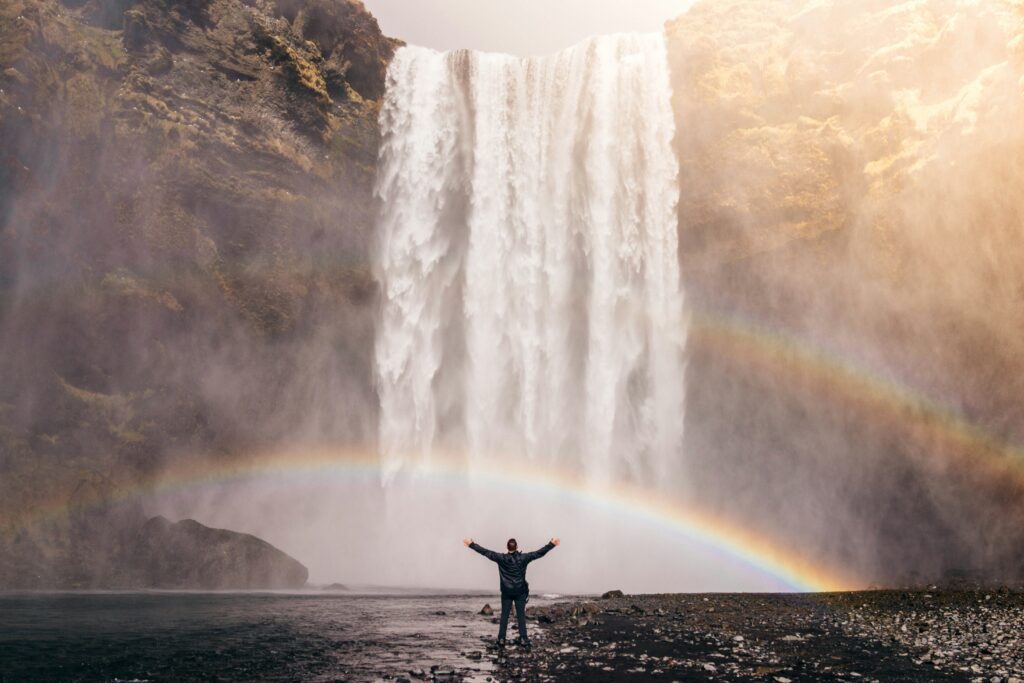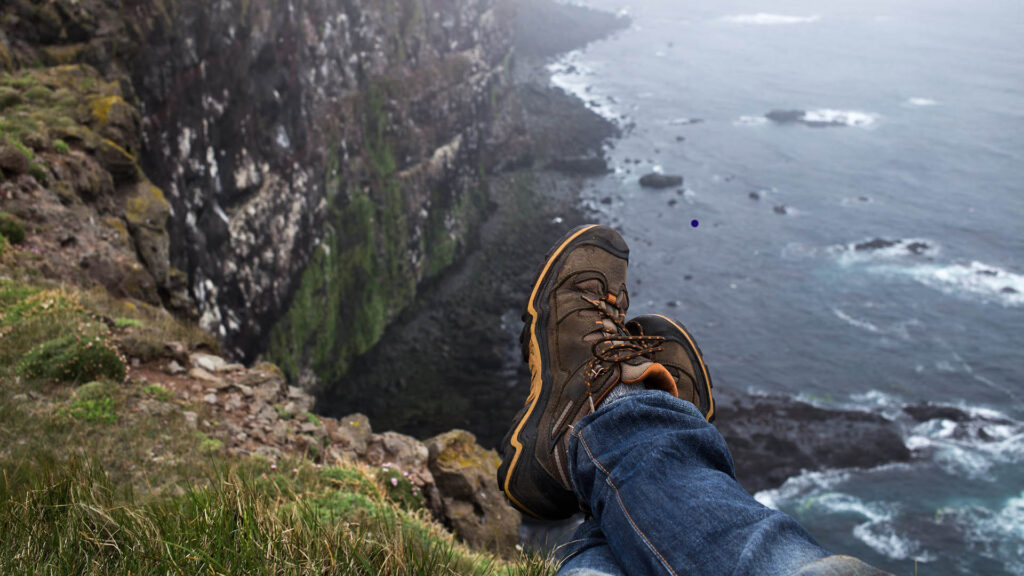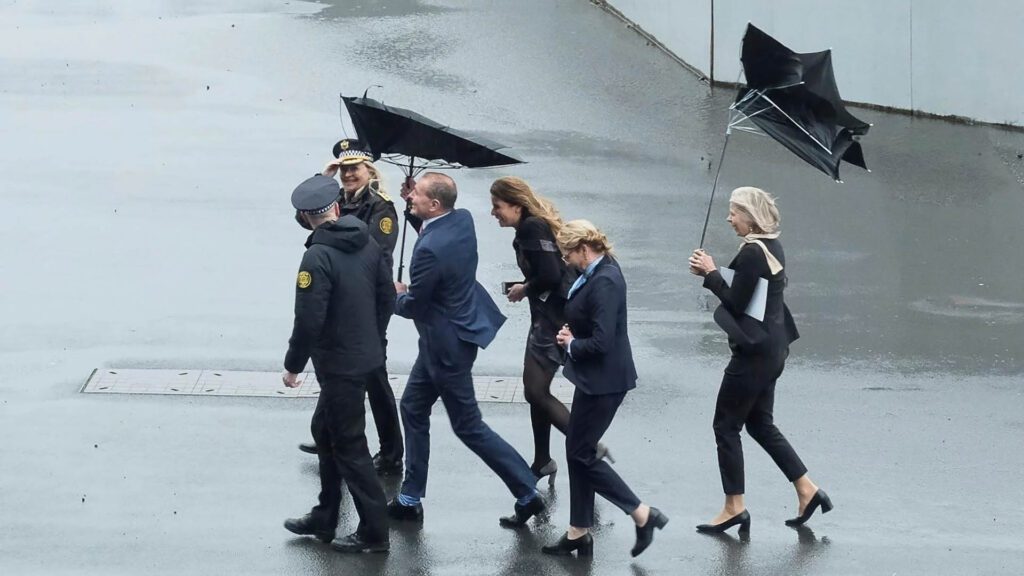
When planning a trip to Iceland, it’s important to pack wisely, considering the country’s varied climate and terrain. To simplify this process, we have created a list of items you may want to avoid packing. This guide will help you pack efficiently to enjoy your Icelandic adventure without the burden of unnecessary luggage. If we inspire you to travel in Iceland with Your Friend in Reykjavik, consider our extensive range of 5-star-reviewed Day Tours in Iceland and please get in touch if you have any questions.
Whether you’re exploring the charming city of Reykjavik, the rural expanses, or both, knowing what not to pack can be as important as knowing what to bring. If you’re still deciding whether to visit in summer or winter, check out our blog about the best time to visit Iceland.
Items You Can Leave Behind When Visiting Iceland
Sneaky Sneakers
While versatile, sneakers may not be the best choice for Iceland’s varied terrains and weather conditions. Hiking boots or waterproof shoes are often more practical for outdoor exploration.
However, if you do not plan on hiking or you will spend all your time in the city, sneakers are enough. Most Icelanders wear sneakers or similar shoes all year round. If you want to be sure you won’t slip, we recommend you buy crampons.
Should You Pack Sandals on your Iceland Trip?

Sandals in the snow? Maybe not.
Given Iceland’s cooler climate, sandals are rarely needed. You’re unlikely to find many occasions to wear them, especially if you’re exploring natural sights or travelling outside of the summer months.
Occasionally, Iceland gets something akin to a heatwave (mainly in the East and North). If you’re travelling in Iceland during one of those rare times, you should bring your sandals.
Leave Your Umbrella At Home
The windy conditions in Iceland make umbrellas impractical. You’re better off with a waterproof jacket or raincoat that can withstand the wind and rain. Even the President of Iceland asks you to leave it at home!

There are only a few days a year when you can use your umbrella in Iceland, and you might find Icelanders taking the chance to use it on just such a day. Usually, we dress in either a raincoat with a hood or put on a hat.
The Thin Line of Layering
Overpacking leads to unnecessary baggage. The key to dressing in Iceland is layering. Instead of packing bulky or numerous outfits, choose versatile clothing that can be layered to adjust to changing weather conditions. The essential part is the layers.
In our Essential Packing Tips for Iceland Trip, you can get further information on what you definitely should bring with you.
Tripods – Essential Tool or Extra Load?

Unless you’re a photography enthusiast, a tripod might be more of a burden than a benefit. Modern smartphones and cameras have improved stabilization features that may suffice for most casual photographers.
Having said that, if you want to photograph the Northern Lights, it is important to have a tripod. Our blog on The Northern Lights in Iceland shows you how to photograph the phenomenon.
To Dress Up or Not To Dress Up in Iceland
You can skip the dressy outfits unless you have specific plans that require formal wear. Iceland’s dress code, even in restaurants, is generally casual and functional. However, having said that, Icelanders usually can spot tourists since they often wear their hiking gear (as well as bring backpacks) to the restaurant. Even if Icelanders are generally casual, we do not wear sweatpants or overly casual clothing when eating out.
No Need For Shorts in Iceland
Considering Iceland’s cooler temperatures and unpredictable weather, shorts are not usually a necessity. Opt for long pants that offer better protection against the elements.
It cannot be stressed enough that the weather in Iceland is highly unpredictable. You can never be sure what the weather will be like at a particular time of year. It is not uncommon to experience snowfall in June or July, and sometimes we can have winters without snow, along with freezing temperatures in May or 20°C in December. And then, there are Icelanders who wear shorts and t-shirts at 13°C. Having said that, despite freak weather events, the weather in Iceland is consistently cold enough to warrant you leaving the shorts at home.
Packing for Iceland is all about being practical and prepared for the elements. By leaving these items behind, you can save space in your luggage and focus on bringing what you truly need for your Icelandic adventure. Our blog on what to pack for your Iceland trip will give you further information. Remember, the key is to pack light, be versatile, and to choose weather-appropriate clothing and gear.










I would like to visit the tomato farm and the sky lagoon while I’m staying in Reykjavík. I do not want to go on part of the golden circle. I can’t find any tours that just go to the tomato farm and the sky Lagoon or just goes to the tomato farm. I need your help since I really wanna go to the tomato farm but taking a taxi there for one person is prohibitively expensive. And yes, I’m traveling solo. Thanks in advance for your help.
Hi Judy, honestly the best way to see Friðheimar is to just go on a Golden Circle tour. There is no public transport that goes directly there, you would have to take a bus to Selfoss and get a taxi from there, which is still a fair distance and would probably end up costing you more than a GC tour – either that or rent a car and drive yourself. The Sky Lagoon is on the outskirts of Reykjavik so you could just take a bus, it’s not very far.